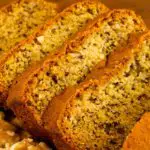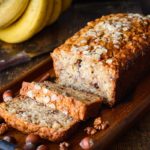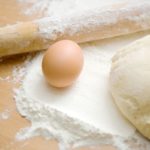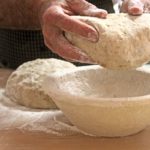Whether you love French bread or simply warm bread fresh from the oven, bread only tastes wonderful when it is not moldy or stale.
But how to prevent mold on bread? There are a few easy things you can do to keep mold spores at bay and prevent mold growth.
From keeping your bread in a bread box to covering your bread loaf in a cloth, storing freshly baked bread is essential to keep bread from molding.
We share our top tips on how you avoid moldy bread and store your bread properly.
Use A Bread Box
Bread boxes don’t just look stylish in your kitchen but they are also an ideal place for storing a fresh loaf of bread.
Simply place your broad without any packaging or plastic bag into the bread box and close the lid.
Bread boxes have the perfect amount of air circulation that keeps bread molds out. Plus, it also preserves enough humidity to preserve the taste of your store bought bread.
Keep in mind that it is best to store only one whole loaf in your bread box to ensure that the oxygen and humidity levels inside the bread box stay steady.
Store The Bread In A Kitchen Cabinet
A kitchen cabinet can work in a similar way to bread boxes.
You can store a variety of breads, including sourdough bread, by putting it into an open plastic wrap or paper bag and then placing the loaf inside a kitchen cabinet.
Regular air circulation keeps mold from growing and it also stops your bread from drying out.
Make sure that your kitchen cabinet isn’t over the fridge where it is exposed to heat. This could dry lighter bread out quickly.
Avoid Pre-Sliced Bread
It can be tempting to buy pre-sliced bread from a grocery store but individual slices of store bought bread dry out much faster than a whole loaf.
This means bread mold can quickly develop on your slices, even when you store them in cloth bags, plastic bags or a bread box.
Use Cloth Bread Bags
If you don’t have space in your kitchen for a bread box, then you can also simply buy a cloth bread bag that keeps your bread soft and fresh for longer.
It provides just enough air circulation, so your bread doesn’t dry out.
Alternatively, you can also use a clean tea towel to wrap your bread in. This works especially well for French bread making it last for up to two days.
Place The Bread In A Kitchen Drawer
If you don’t have room for your bread in a kitchen cabinet, then you can also put it in a deep kitchen drawer to discourage mold from developing.
Just make sure that you wrap your bread in a clean tea towel or a cloth bread bag to allow just enough humidity for the bread to stay fresh.
Wrap Bread In A Brown Paper Bag
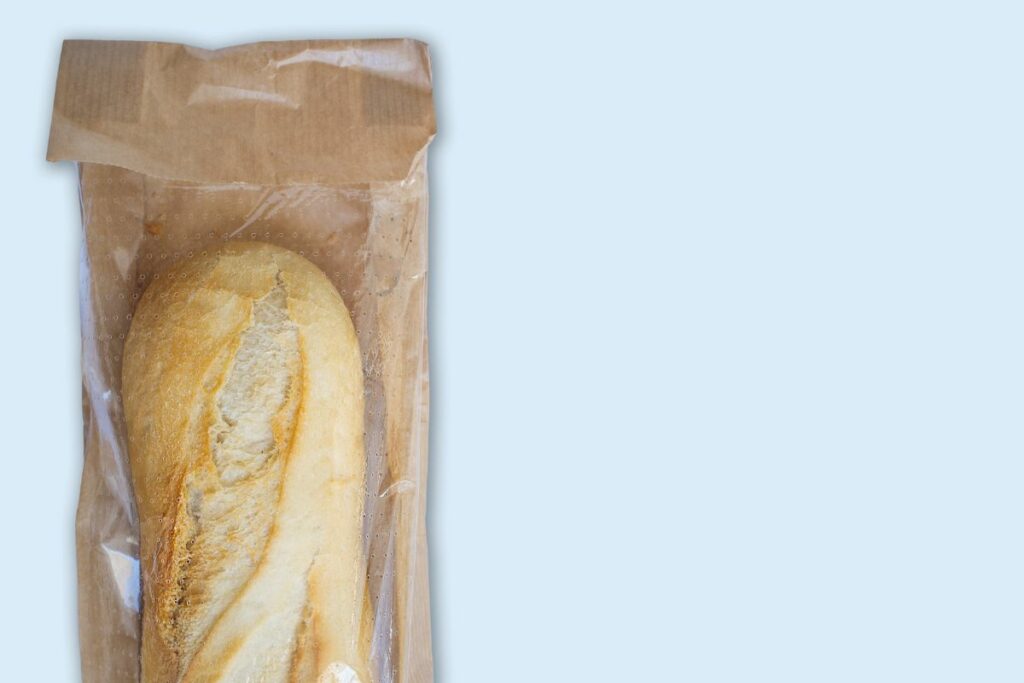
Your local bakery may sell their bread in brown paper bags that preserve bread for a few days. In fact, you can keep rustic breads for up to two days when you wrap bread in brown paper.
Just ensure that the brown paper bag is sealed and you don’t put your bread in direct sunlight as this could dry the bread out.
Slice Bread From The Middle
When you start using your fresh bread, then it is best to cut it into the middle and then push the two bread halves together when you store it.
This preserves the freshness of the bread and it can keep bread from molding for a couple of days.
Avoid Storing Bread In A Plastic Bag
Plastic bags or plastic wraps aren’t breathable, so they create humid conditions that allow mold spores to grow on your bread.
In order to store bread in the right way, try to avoid plastic bags and use bread bags instead. Alternatively, keep your plastic bag open for the right amount of air circulation.
Keep Bread Out Of The Fridge
It is a common myth that storing food in the fridge will preserve it. However, the fridge is not the best place for storing bread because it can go stale there quickly.
While the low temperatures of the fridge ensure that there is no mold growth on your bread, refrigerated bread turns dry and hard.
If you want to store bread for longer, then place it into a sealed freezer bag to prevent freezer burn and put it into the freezer.
Frozen bread is less likely to develop mold growth, although you should eat your bread after a few months because the quality of the bread will decline after a while.
Toast Your Bread
If you notice that your homemade bread starts to get stale, then it is likely that your bread will grow moldy very soon.
The best way to save your bread from mold spores is to toast it and eat it as soon as possible.
Revive Your Stale Bread
Keeping your bread fresh is essential to preserve the taste and avoid moldy bread. There is no need to throw out your old bread. You can still use stale homemade bread in a variety of ways.
Just make sure that you revive the stale bread before you eat. You can do this by toasting it or putting it into a warm oven for a few minutes.
The heat will soften your own bread after five minutes and you can enjoy your bread fresh and tasty.
Final Thoughts
You will find that different breads go moldy at different times. Staleness and mold happen when your bread isn’t stored in the right way.
White loaves of bread need just the right amount of air and humidity to stay fresh for a few days.
Darker bread, such as sourdough, whole wheat or rye, takes much longer to grow mold but you can still use our mold prevention methods to ensure your bread tastes as delicious as when it came out of the oven.




